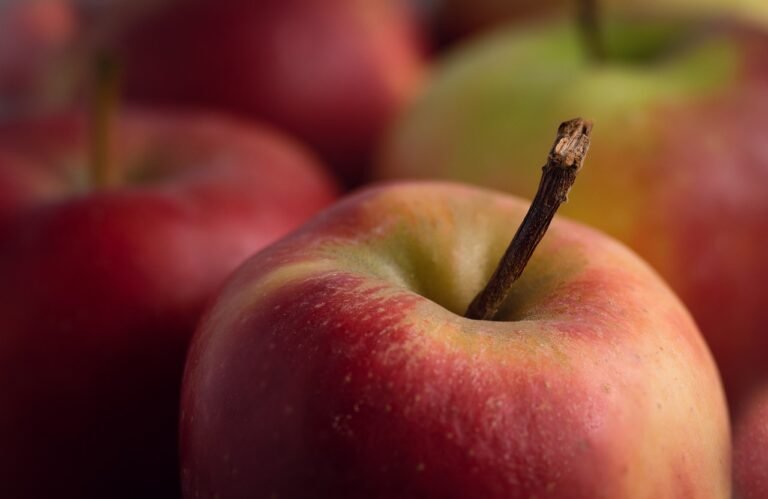5 Vital Steps to Enhance Healthy School Lunches in the USA
Healthy School Lunches in the USAis the foundation of a child’s well-being and development, with school breakfasts substantial in providing essential daily supplements. The nature of these feasts often forms dietary patterns and trends that persist long into adulthood. This post examines five critical developments associated with improving nutritious school breakfast guidelines to defend America’s childhood prosperity. 5 Vital Steps to Enhance Healthy School Lunches in the USA
Introduction. Healthy School Lunches in the USA
Children spend much of their day at school, often eating something like a treat nearby. What’s on their lunch plate has far-reaching implications, affecting learning abilities, energy levels, and general health. Understanding the function of sustenance in intelligence and the actual turn of events in schools can guarantee that their midday meal programs feed personalities and understudies. 5 Vital Steps to Enhance Healthy School Lunches in the USA
Step 1: Implement Nutritional Guidelines.Healthy School Lunches in the USA

The most crucial step toward improving school breakfast is a set of nutritional guidelines and adherence to them that focus on health. By establishing an informed system for dinner arrangements, schools ensure that each lunch served is adjusted, including all nutrient categories and calorie requirements conducive to child development. USDA rules provide a solid foundation, creating appropriate bit sizes and nutritional goals.
Limiting added sugars and sodium
Empowering whole grains
Guaranteed serving of clay products
By regularly changing these rules, taking into account the latest nutritional science, the dietary needs of the understudies are taken care of.
To raise school breakfast expectations, master audits by nutritionists and dietitians should be an essential part of the banquet planning process. Liaising with these experts to review and refine menus ensures that healthy principles are hypothetical goals, however appropriate, with age-appropriate dinner designs that appeal to student preferences. These experts can offer up-to-date dietary patterns and knowledge to the exam, for example, the benefits of plant-based choices or the need to reduce the types of processed foods. Schools can also involve these experts in teaching projects that show the importance of nutrition to less educated people and guide them in making better food decisions.
Liaising with registered dietitians to formulate menus.
Planning occasional audits of dinner contributions
Consolidating critiques from understudies and mentors in conferences with experts
This cooperative approach underscores the responsibility to provide the most exemplary upbringing to developing students. 5 Vital Steps to Enhance Healthy School Lunches in the USA
Step 2: Increase Access to Fresh and Whole Foods. Healthy School Lunches in the USA

An essential fix in sound school breakfast recipes is the food itself. Schools are minded to partner with nearby homes and organizations to blow open the door to new, organic produce supplies.
Establishing associations with local farming areas
It is pouring resources into ranch-to-school programs that bring new, nearby food sources to cafeterias.
These actions not only stimulate the local economy and support the climate, but school children benefit tremendously by reducing the types of processed foods in their diet.
Incorporating new and whole food sources into school breakfasts can substantially increase their nutritional value. Experts suggest fresh produce retains higher levels of critical nutrients and minerals and offers more decadent flavors that encourage children to make better eating decisions. Dr. Annika Gustafsson, a pediatric staunch master, highlights the new fixing’s function, noting that “youngsters are bound to appreciate clay products when they taste better, and anything private. But can’t beat the taste of foraged, freshly picked produce.”Schools can offer up-to-date choices by setting up garden programs or acquiring from neighboring homes while instructing students on the importance of supporting nearby farms.
Looking for advice from neighborhood nutritionists to choose produce that’s in season.
Start of school nurseries for youth development and food collection
Consolidating cooking classes that use innovations to advance culinary skills.
Well-educated emotions support the educational side of such drives, making the homestead-to-table idea a powerful teaching tool and a way to promote lunch quality further. 5 Vital Steps to Enhance Healthy School Lunches in the USA
Step 3: Improve Food Preparation and Cooking Techniques. Healthy School Lunches in the USA
With almost new reforms, the following phase centers around food arrangements. Food preparation is fundamental to revamping school menus with better cooking strategies for cafeteria staff.
Progress from heating pre-packaged dinners to participating in more scratch cooking
Using baking, barbecuing, and steaming over searing
By investing resources in preparing and legitimizing kitchen equipment, schools can work holistically on the nature of their food contribution.
Upgrading the capacity of kitchen staff with constant instruction and surveys from culinary experts can prompt better, more appealing recipes. Master audits are essential to continually revise and develop school cafeterias’ cooking methods and recipes. Sophisticates and nutritionists can offer active studios and refreshing preparation materials that emphasize preparing nutritious, delicious dinners. 5 Vital Steps to Enhance Healthy School Lunches in the USA
Facilitating sophisticated expertise encouraged studios to innovate sound menu items.
Find routine recipes to make according to the diet’s rules.
Empowering cafeteria staff to improve well-being knowledge practices.
Through these master drives, schools can create a culture of pure excellence that focuses on the well-being of students. By giving cafeteria staff the tools to turn raw, healthy foods into delicious, nutritious dinners, children will benefit from high-nutrient meals and eat as much as possible. 5 Vital Steps to Enhance Healthy School Lunches in the USA
Step 4: Increase Access to Fresh and Whole Foods

Better school breakfasts don’t have to mean dinner scares. Going against the norm, schools bring a variety of talent to the table for a buffet of culinary styles catering to dietary needs while celebrating social variety. 5 Vital Steps to Enhance Healthy School Lunches in the USA
It creates menus that reflect the social sense of the body under study.
Involving understudies in the menu-setting process through reviews and trials
This approach fosters an inclusive climate while educating understudies about worldwide weight control plans and customs.
Continuing with the theme of further developing meal planning and cooking methods, traditional master surveys can be crucial in maintaining high culinary guidelines in school cafeterias. Collaborating with expert chefs and nutritionists to review and test current practices ensures that dinners are the best they can be and that the best strategies are used in advance. There is a set of things one can hope to find. This type of peer supervision can lead to critical criticism, which thus drives development and progress in the general dinner administration offering. Arrangement of Quarterly Master Audit to ensure evolving quality. 5 Vital Steps to Enhance Healthy School Lunches in the USA
More : Empower Her: 2024 Women’s Health Access in the USA is Good Taking a continuous improvement process in the face of master criticism
Incorporating culinary narratives into an educational project to foster a culture of culinary excellence among undergrads
They are meant to help create a dynamic and responsive culinary climate that can quickly adjust to new health information, dietary patterns, and trends being studied, guaranteeing that the school Treats should be attractive and ideal in terms of health. 5 Vital Steps to Enhance Healthy School Lunches in the USA
Step 5: Call To Action

Training is a vital part of developing an economically sound lunch program. Understudies and their families who are close to school staff should be closed and educated about the benefits of nutritious dinners.
Implementing intelligent parenting training in school education programs
Integrating studios for patrons to practice better food decisions
An educated local area is an active area equipped to make well-informed choices.
The commitment to the local area extends beyond the study hall and into the home, where forms can significantly affect children’s health. Experts agree on the multiplier effect of parental involvement in increasing the benefits of good nutrition. “When caregivers adjust meals and prepare nutritious dinners at home, children are bound to make better food decisions on their own,” noted nutritionist Julie Smith. Schools can play an essential part in this cycle by:
Monthly bulletins with healthy tips and simple, delicious recipes. 5 Vital Steps to Enhance Healthy School Lunches in the USA
Mentoring creates drives that stimulate an inclusive approach to coping with sustenance.
Organizing neighborhood food fairs to showcase smart dieting and connecting families with nutritionists
Joining educational efforts between school and home settings guarantees reliable information and supports deep-rooted innovative dieting trends. 5 Vital Steps to Enhance Healthy School Lunches in the USA
Preparing Daily Recipes Aligned with Healthy School Lunch Goals
Consistency in implementing SMART Dieting standards is critical to the success of any school lunch program. To guarantee that each meal meets students’ nutritional needs while being attractive, schools must take a proactive approach to daily recipe planning. Integrating farm-to-school programs, where accessible, can significantly improve the quality and novelty of the fixings used. In addition, the daily menu should consistently meet the hierarchy, allowing young people to experience new preferences with the satisfaction of natural selection and to face unique preferences with the satisfaction of natural selection. 5 Vital Steps to Enhance Healthy School Lunches in the USA
It promotes a rotating menu that complements comfort food choices with new, bold dishes.
Using occasional, privately sourced fixings to plan new and nutritious treats
Work with nutritionists to create adjusted recipes that meet dietary guidelines.
This means empowering schools to offer a combination of solid dishes that meet nutritional guidelines and enrich the sense of taste, improve the brain, and care for the climate. Joining intelligent people daily with hearty, restorative feasts sends the message that their well-being matters and that good food can be heavenly and fun. 5 Vital Steps to Enhance Healthy School Lunches in the USA
Call To Action

To realize the full potential of these necessary developments, it is imperative that all partners – teachers, parents, students, and local leaders – be effective in the mission to improve the nature of school breakfasts in the USA. Participate properly. We call on everyone in the local area to: 5 Vital Steps to Enhance Healthy School Lunches in the USA
Advocate for strategic changes at the local and state levels to support ranch-to-school drives.
Volunteer at neighborhood school programs by offering cooking or nutrition skills.
Stimulate and sustain school efforts in starting nurseries and scratch cooking. Participate in menu planning and critique through review and trial potential open doors. 5 Vital Steps to Enhance Healthy School Lunches in the USA
Share knowledge assets and organize local area studios to spread brainstorming.
Together, we have the potential to feed the future of our youth – a nice dinner each in return. Join us on a journey of nutritional enlightenment and pledge your support for these five fundamental advances today. Let us transform your school cafeteria into a gateway to prosperity, learning, and social festivity. 5 Vital Steps to Enhance Healthy School Lunches in the USA
Conclusion
Good school breakfasts are a vital right of every child and a shared responsibility of the whole local area. Sustainable growth in our school lunch programs requires intentional efforts by managers, instructors, mentors, and understudies. By embracing these resources, schools can offer treats that are both meals and pathways to a child’s journey to more profound health and well-being. 5 Vital Steps to Enhance Healthy School Lunches in the USA
The debate about solid school breakfasts should continue, as it has the potential to shape a healthier, more energetic age. The benefits go far beyond the cafeteria through instruction, access to quality food sources, and more advanced treats. It is an interest in the future of our country, every lunch in return. 5 Vital Steps to Enhance Healthy School Lunches in the USA
Focusing on the well-being of our children, we upgrade their cognitive presentation and fixation and provide trends that will help them throughout their lives. Real change starts with minor, noticeable improvements leading to extensive upgrades. As a general public, we must accept our responsibility to give our children the best, and building a solid school lunch program is an exceptional starting step. Thus, let us push these reforms forward. We must join to guarantee that every young person has the resources they need to thrive in school and everyday life. 5 Vital Steps to Enhance Healthy School Lunches in the USA
FAQs
What are school lunches in the USA?
School lunches in the USA refer to meals provided to students during their school day. These meals are typically served in cafeterias and are designed to meet certain nutritional guidelines set by the government.
Who qualifies for free or reduced-price school lunches?
Eligibility for free or reduced-price school lunches is based on household income and family size. Families with incomes at or below 130% of the federal poverty level qualify for free lunches, while those with incomes between 130% and 185% of the poverty level qualify for reduced-price lunches.
What is typically included in a school lunch?
A typical school lunch includes a combination of protein, grains, fruits, vegetables, and dairy. Common items might include sandwiches, salads, pasta dishes, fruits, yogurt, and milk.
How are school lunch menus developed?
School lunch menus are developed by nutritionists and food service professionals in accordance with federal guidelines. These guidelines specify minimum and maximum calorie levels, as well as requirements for specific food groups like fruits, vegetables, and whole grains.
Are school lunches affordable for all students?
Many schools participate in federal meal programs that provide free or reduced-price lunches to eligible students based on household income. This ensures that all students have access to nutritious meals, regardless of their financial situation.
How can parents encourage healthy eating habits at home?
Parents can lead by example by modeling healthy eating habits and involving children in meal planning and preparation. They can also provide a variety of nutritious foods at home and limit the availability of unhealthy snacks and sugary beverages.
What role do schools play in educating students about nutrition?
Schools play a crucial role in educating students about nutrition through classroom lessons, cafeteria activities, and wellness programs. Teaching students about the importance of healthy eating empowers them to make informed food choices.
How can schools promote sustainability in school lunch programs?
Schools can promote sustainability by sourcing local and seasonal ingredients, reducing food waste through composting and recycling initiatives, and offering reusable or compostable food packaging.
Where can I find more information about healthy school lunches?
Additional information about healthy school lunches can be found on the websites of organizations such as the USDA’s Food and Nutrition Service, the Academy of Nutrition and Dietetics, and the Alliance for a Healthier Generation.






